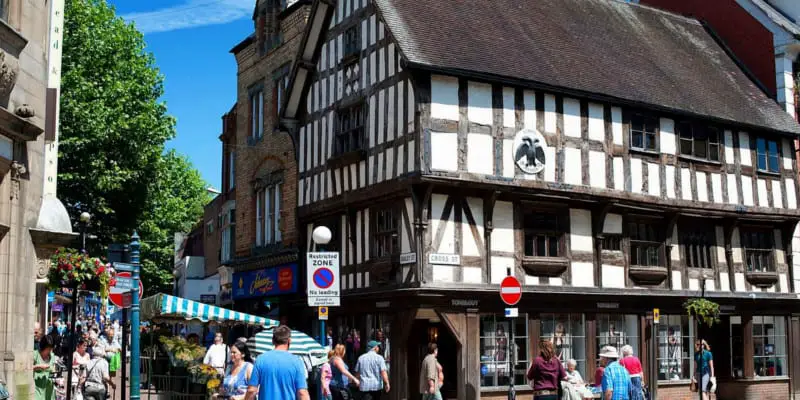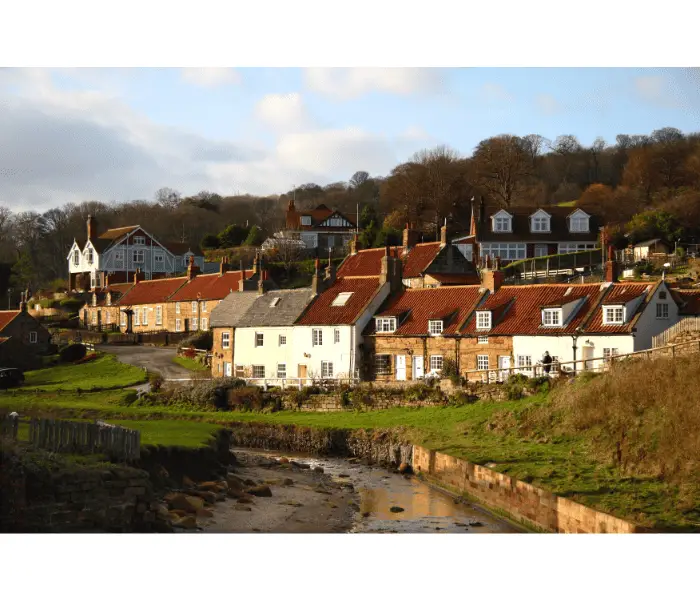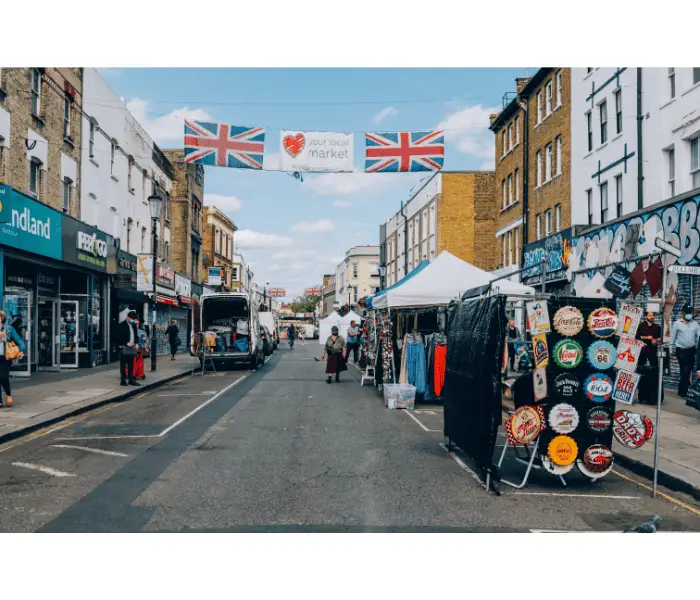If you’ve ever been travelling around the British countryside, you might have wondered about the differences between a village and a market town.
Within the similar definitions of British settlements like municipalities, this difference is actually one of the easiest to define.
And that’s what we’ll look at in this article. Below, you’ll learn the differences between a market town and a village.
What Defines a Market Town?
A market town is more of a historic definition than anything else. In the Middle Ages, a market town was one that had received a royal charter to run a market where locals could sell their goods. As such, they were important economic hubs in an area.
Although we don’t use this characteristic anymore, most market towns retain their status, even if just historically. It’s quite easy to spot a market town because it’ll usually have a clear square near the centre of the settlement.
Market Town Definition
This is where the market would’ve been held, and the shops in the centre would have originally been stalls. Over time, people built houses on them to save having to travel to the market square each week.

What Defines a Village?
A village is essentially a small human settlement, one stage above a hamlet. There’s no strict population limit in the definition of a village.
Generally, the population of a village numbers a few thousand, but it can go as high as 15,000-20,000 depending on the size and status of the village.
The most important criteria for a village are that it has a church and some kind of meeting place, such as a village green or square. Most villages also have pubs, but this isn’t a strict point.
In the past, villages specifically didn’t hold agricultural markets. However, many now do because we don’t use this distinction as much.
Also, you’ll typically find several villages around a single market town due to the latter being the economic hubs of a set area.

Is a Market Town a Village?
The answer to this question should be fairly obvious. A market town isn’t a village, it’s a town. Villages are smaller settlements with fewer economic and administrative centres.
Although the difference between the two settlements isn’t as obvious by modern standards, it’s still pretty clear.

Differences Between a Village and a Market Town
Let’s summarise the differences to understand why a market town isn’t a village.
Administration Centres
A market town, like other towns, has a mayor and a town hall. These fulfil administration purposes, such as local government needs, and town halls serve as public event spaces.
Villages have village halls, but these are pretty much exclusively used for public events. You might find they host village meetings occasionally, but these typically don’t have any administrative power.
Local Events
Market towns historically hold agricultural markets, whereas villages don’t. Towns would be given a charter to hold these markets, which allowed local lords to collect tolls and taxes from people wanting to sell goods.
However, the concept of markets predates these royal charters by a long time. There’s evidence that Colchester was hosting regular markets as far back as the Roman period, giving it a decent claim to the oldest market town in the country.
Villages, however, were specifically banned from holding agricultural markets. Instead, people from villages would travel to the local market town to sell their goods.
This was partly because of the tax regulations (collecting people together made it easier to tax them).
Population
Neither towns nor villages actually include specific distinctions for population sizes. A town is defined by a town charter or market charter, but these often lead to larger population and settlement sizes.
A village is typically a settlement with a population of 7,500 or less. A town would be anything above this (before we reach city).
However, urban areas are ones with populations over 10,000, so you can see how it becomes a bit difficult to use population sizes as a distinction.
And that’s not even including large villages. In the UK, some villages that fall outside of this definition include:
· Lancing, West Sussex – 18,000
· Ecclesfield, South Yorkshire – 32,000
· Bradfield, South Yorkshire – 17,000
None of these villages meets the criteria to become towns, despite having pretty large populations. As such, it’s better to steer clear of using population sizes to differentiate villages and market towns.
Final Thoughts
So there you have it, the difference between a market town and a village. If you’re exploring the British countryside, it should be easy to tell the difference, as the former has a market centre!


